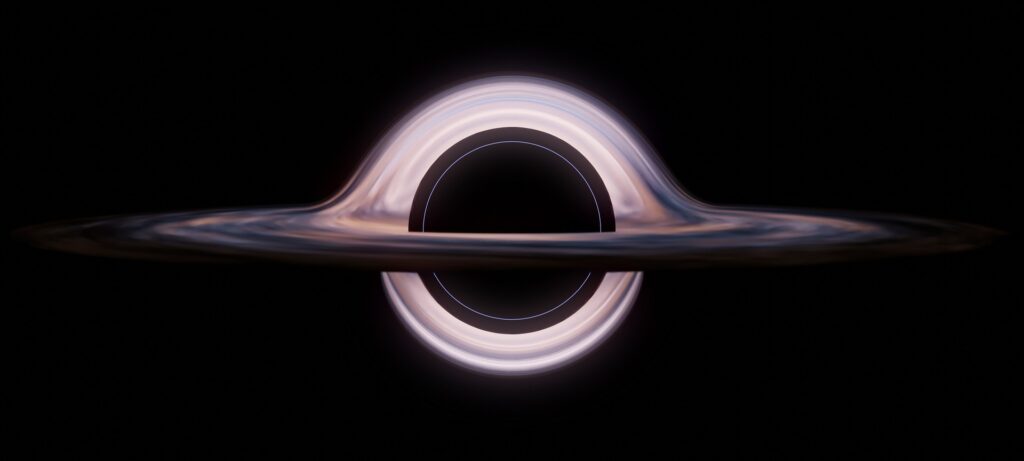Blackholes are one of the most mysterious cosmic objects that have marveled our scientists since we learned about their existence. We have continued learning about them over time to see what they are made of and improve our knowledge of astronomy. Scientists recently conducted a study that reveals the quantum particles of black holes. This study went ahead to suggest that black holes can be at the same time, heavy and light, small and big, dead and alive.
Researchers got the outcome of this study through computer modeling targeted at discovering the unique connection between the time-warping physics of supermassive objects like black holes and the rules regulating the behavior of the smallest subatomic particles.
When participating in the study, the team of scientists created a mathematical framework that positioned simulated quantum particles outside the massive simulated black hole. After that, they observe the simulation and discovered that the black hole displayed signs of quantum superposition, which is the potential of existing in multiple states at the same time. Existing in multiple states implies that black holes can be both big and small at once.
“We wanted to see whether [black holes] could have wildly different masses at the same time, and it turns out they do,” study lead author Joshua Foo, a Ph.D. researcher in theoretical physics at the University of Queensland, stated. “Until now, we haven’t deeply investigated whether black holes display some of the weird and wonderful behaviors of quantum physics.”
In the 20th century, renowned physicist Erwin Schrödinger demonstrated some vital problems of quantum physics with an experiment named the legendary Schrödinger’s cat. This is a thought experiment that describes a paradox of quantum superposition where a cat was assumed to be dead and alive at the same time.
The outcome of that experiment was described as a random subatomic event that may or may not happen. Because of the fascinating idea behind Schrödinger’s cat, physicist Schrödinger won the Nobel Prize in Physics in 1933. Up to date, Schrödinger’s cat experiment has remained the best-known example that explains this new study better. Keep in mind that quantum theory has it that subatomic particles can appear in multiple states simultaneously until they establish interaction with the external world.
In 1972, American and Israeli theoretical physicist Jacob Bekenstein came up with the idea that black holes may possess quantum properties. Scientists that participated in this study existed as Bekenstein’s prediction is coming into reality.
“Our modeling showed that these superposed masses were, in fact, in certain determined bands or ratios as predicted by Bekenstein,” study co-author Magdalena Zych, a physicist at the University of Queensland and a co-supervisor of the research stated. “We didn’t assume any such pattern going in, so the fact we found this evidence was quite surprising.”
Despite our limited understanding as regards what is happening inside black holes, this study is moving us closer to having better imaginations about supermassive cosmic objects like black holes. The outcome of this new study was published in the journal Physical Review Letters on October 28. You can check it out to learn more about the fascinating discoveries made by scientists during the study.




